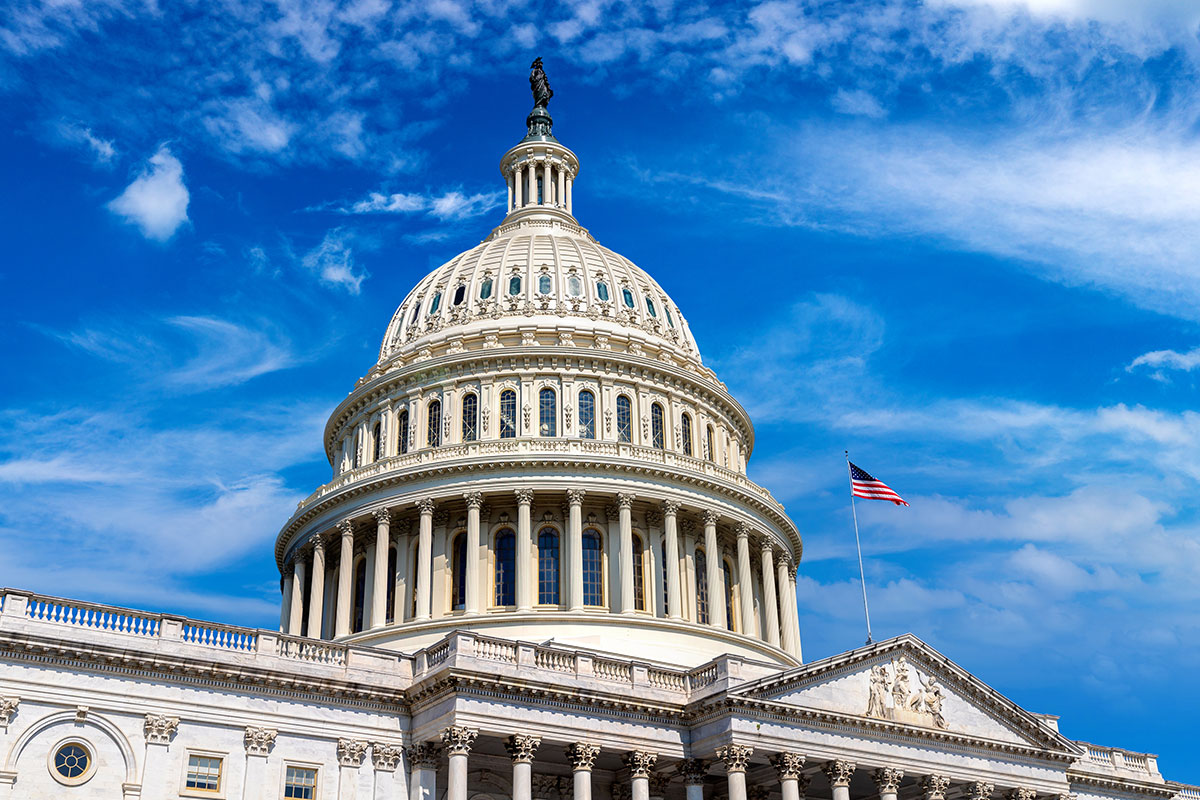Congress has until June 1, 2023, to raise the United States’ debt limit. An increase in the debt ceiling is required not to increase spending, but rather to pay for previously approved spending. If an agreement isn’t reached, the United States will default on its debt.
There are three significant issues to be concerned about and two that we think are not significant.
What to watch
- History indicates that a crisis will be avoided. The debt ceiling was established by Congress in 1917 in order to control the country’s indebtedness. Only the United States and Denmark have a debt ceiling in absolute terms rather than in percentages. Since 1960, congress has increased the ceiling 78 times. It begs the question, why have a debt ceiling?
In 2011, Congress raised the ceiling two days before the deadline. The brinksmanship triggered volatility in the financial markets and for the first time, S&P Global Ratings downgraded US Government debt. In 2012 and in 2021, debt limit agreements also came in the 11th hour.
- The government has several options. Congress can suspend the ceiling, or allow the Treasury to temporarily exceed the limit, rather than increase it. The government can also use “extraordinary measures” to avoid a default and buy time for the politicians to reach an agreement. Perhaps no longer “extraordinary” as the government has relied on these measures almost every year over the past decade.
According to Treasury Secretary, Janet Yellen, the US could hit the debt ceiling and be unable to meet its financial obligations as soon as June 1. If other government payments such as social security payments or government payrolls are delayed or missed, the odds of an economic recession increase.
- The financial markets reinforce our thinking that a crisis will be avoided. Year-to-date as of May 15, the S&P 500 is up 7.5%, clearly not indicating a financial catastrophe; however, in 2011 the markets didn’t show signs of stress until two weeks before the deadline. From July 22, 2011, to August 3, 2011, when Congress passed a debt ceiling increase, the S&P 500 was down 6.3%.
After S&P Global Ratings downgraded US government debt, peak to trough, the S&P 500 was down approximately 17% due to the uncertainty. Regardless of a credit downgrade, from mid-August to the end of the year, the S&P 500 was up 9%. A debt ceiling deal could promote a rally in risk-based assets.
Short-term liquidity is a risk, therefore very-short Treasury Bills are being avoided, pushing yields up, nevertheless, the two-year Treasury and 10-year Treasury yield remain at 4.0% and 3.5%, suggesting economic Armageddon is unlikely.
As we get closer to the deadline, we expect the volatility in financial markets to increase, just as we have seen in the past.
Noise to avoid
In the debt ceiling conversation, there can be issues that we believe are not material:
- The US dollar will not lose its world’s reserve currency status. Currently, there are no other viable alternatives, 60% of global currency reserves are in US dollars.
- Inflammatory language can be misleading. Stories that focus on high-impact, but low-probability outcomes are not helpful, or even useful. Too many stories focus on remote probabilities that could be “disastrous” or “catastrophic” – causing many to believe that these are the expected outcomes. This approach is not helpful when attempting to make unemotional decisions about finances.
Our base case is that both political parties compromise and a swift resolution is reached by Congress just before the deadline. Like previous agreements, the resolution will more than likely kick the can down the road a few months and we will be having a similar conversation by the end of the year. History and the financial markets support this conclusion. We think the worst-case scenario is a very-short delay in government payments, not a default, followed by a resolution where everyone is made whole. This would result in temporary market volatility and reduced economic activity due to damaged consumer confidence and delayed consumer consumption.
Portfolio management success
We think two portfolio management themes have been successful in this environment of uncertainty:
- Diversifying equity portfolios globally and diversifying bond portfolios by sector have always reduced risk.
- Investing in quality securities. Investing in securities with strong balance sheets and stable earnings will stand the test of time.
Follow UMB‡ on LinkedIn to stay informed of the latest economic trends.
When you click links marked with the “‡” symbol, you will leave UMB’s website and go to websites that are not controlled by or affiliated with UMB. We have provided these links for your convenience. However, we do not endorse or guarantee any products or services you may view on other sites. Other websites may not follow the same privacy policies and security procedures that UMB does, so please review their policies and procedures carefully.
DISCLOSURES AND IMPORTANT CONSIDERATIONS
UMB Investment Management is a division within UMB Bank, n.a. that manages active portfolios for employee benefit plans, endowments and foundations, fiduciary accounts and individuals. UMB Financial Services, Inc.* is a wholly owned subsidiary of UMB Financial Corporation and an affiliate of UMB Bank, n.a. UMB Bank, n.a., is a subsidiary of UMB Financial Corporation.
This report is provided for informational purposes only and contains no investment advice or recommendations to buy or sell any specific securities. Statements in this report are based on the opinions of UMB Investment Management and the information available at the time this report was published.
All opinions represent UMB Investment Management’s judgments as of the date of this report and are subject to change at any time without notice. You should not use this report as a substitute for your own judgment, and you should consult professional advisors before making any tax, legal, financial planning or investment decisions. This report contains no investment recommendations, and you should not interpret the statements in this report as investment, tax, legal, or financial planning advice. UMB Investment Management obtained information used in this report from third-party sources it believes to be reliable, but this information is not necessarily comprehensive and UMB Investment Management does not guarantee that it is accurate.
All investments involve risk, including the possible loss of principal. Past performance is no guarantee of future results. Neither UMB Investment Management nor its affiliates, directors, officers, employees or agents accepts any liability for any loss or damage arising out of your use of all or any part of this report.
“UMB” – Reg. U.S. Pat. & Tm. Off. Copyright © 2023. UMB Financial Corporation. All Rights Reserved.
*Securities offered through UMB Financial Services, Inc. Member FINRA, SIPC, or the UMB Bank, n.a. Capital Markets Division
Insurance products offered through UMB Insurance Inc.
You may not have an account with all of these entities.
Contact your UMB representative if you have any questions.





